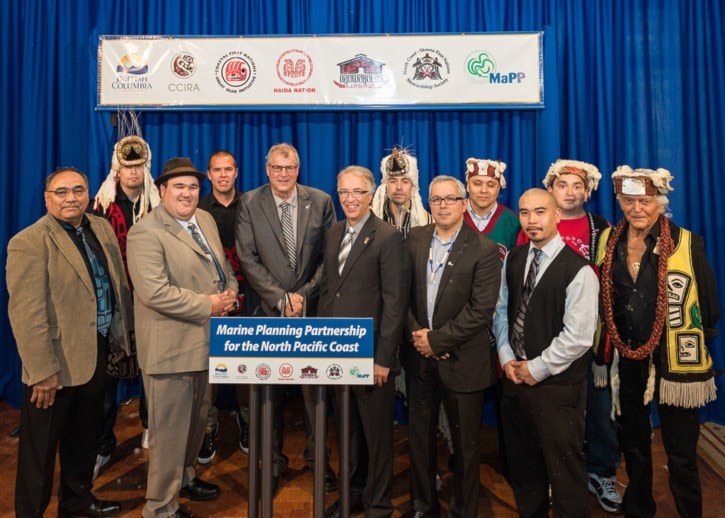An agreement on sustainable marine planning covering about 102,000 square kilometres of the B.C. coast — much of it fronting the Great Bear Rainforest — was jointly announced Monday in Victoria by the provincial government and 18 first nations.
Plans covering two-thirds of the B.C. coast define areas from general use to special protection, including natural and cultural areas, within four sub-regions — Haida Gwaii, North Coast, Central Coast, and North Vancouver Island.
Marine stakeholders representing multiple sectors provided input and advice to the process via advisory committees: four sub-regional and one regional. In addition, a Science Advisory Committee gave expert technical and scientific knowledge and advice throughout the planning process.
Both the Nuxalk Nation and the Central Coast Regional District took part in the process.
“CCRD was involved in an advisory capacity during the creation of the Central Coast plan and intends to stay involved in this way during implementation and management,” said Alison Sayers, CCRD representative on MaPP's Central Coast Marine Plan Advisory Committee. “It was a positive and collaborative planning process and I hope to see many positive social, environmental, and economic benefits for our region.”
The plans take into consideration factors such as species, habitats, and marine uses, including recreational and commercial activities, and are meant to serve as a basis for future management decisions, especially in the near shore and foreshore areas of the coast.
The marine plans do not address management of uses and activities in areas of federal jurisdiction such as commercial fishing and marine transportation, including LNG development, as well as management of private lands or uplands.
While the conclusion of this plan represents a significant step forward in managing marine areas on the coast, there is still a lot of work to do with the federal government.
Aboriginal leaders said coastal planning won’t be complete until similar agreements are reached with the federal government, which has jurisdiction in key areas to do with the water itself such as commercial fishing and shipping, including transport of oil and liquefied natural gas.
Art Sterritt, executive director of Coastal First Nations, said it’s disappointing Ottawa did not participate in the Marine Planning Partnership agreement. But, he said, talks are underway with federal officials and he is “fairly optimistic the federal government is going to engage with us.”
Sophie Doucet, a spokeswoman for the fisheries and oceans minister, said Ottawa did not participate in the Marine Planning Partnership because of other similar land use work, including development of a network of marine protected areas on the B.C. coast.
“Our national conservation plan includes $37 million for measures to strengthen marine and coastal conservation across Canada,” said Doucet.
Sabine Jessen, national oceans program director of the Canadian Parks and Wilderness Society, said the marine plans mark the “beginning of a long process” towards implementation, adding she hopes the “federal government will seize the opportunity to build on this” and ensure that the region receives comprehensive ocean management and protection.
Among those supporting the Marine Planning Partnership (MaPP) agreement: Central Coast Indigenous Resource Alliance, Coastal First Nations-Great Bear Initiative, Council of the Haida Nation, Ministry of Forests, Lands and Natural Resource Operations, Nanwakolas Council, North Coast-Skeena First Nations Stewardship Society. Tides Canada and the Gordon and Betty Moore Foundation contributed to the effort.
Parties to the agreement are “now focused on drafting implementation agreements for future action,” according to a news release.
